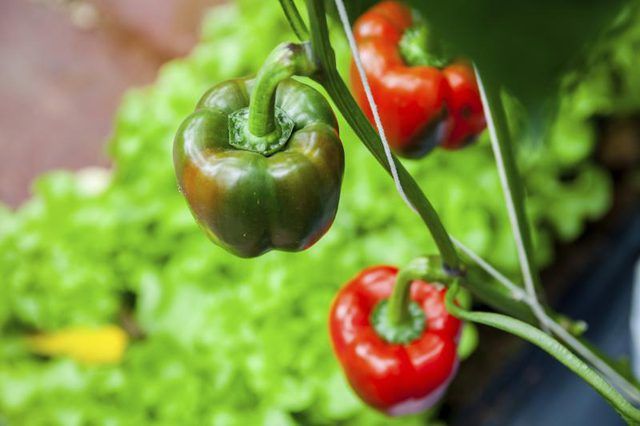Bulbs
Flower Basics
Flower Beds & Specialty Gardens
Flower Garden
Garden Furniture
Garden Gnomes
Garden Seeds
Garden Sheds
Garden Statues
Garden Tools & Supplies
Gardening Basics
Green & Organic
Groundcovers & Vines
Growing Annuals
Growing Basil
Growing Beans
Growing Berries
Growing Blueberries
Growing Cactus
Growing Corn
Growing Cotton
Growing Edibles
Growing Flowers
Growing Garlic
Growing Grapes
Growing Grass
Growing Herbs
Growing Jasmine
Growing Mint
Growing Mushrooms
Orchids
Growing Peanuts
Growing Perennials
Growing Plants
Growing Rosemary
Growing Roses
Growing Strawberries
Growing Sunflowers
Growing Thyme
Growing Tomatoes
Growing Tulips
Growing Vegetables
Herb Basics
Herb Garden
Indoor Growing
Landscaping Basics
Landscaping Patios
Landscaping Plants
Landscaping Shrubs
Landscaping Trees
Landscaping Walks & Pathways
Lawn Basics
Lawn Maintenance
Lawn Mowers
Lawn Ornaments
Lawn Planting
Lawn Tools
Outdoor Growing
Overall Landscape Planning
Pests, Weeds & Problems
Plant Basics
Rock Garden
Rose Garden
Shrubs
Soil
Specialty Gardens
Trees
Vegetable Garden
Yard Maintenance
How to Grow Bell Peppers
How to Grow Bell Peppers. More than 200 cultivars of bell peppers (Capsicum annuum) exist, making it the largest group of cultivated peppers. Most varieties reach maturity in 60 to 90 days, bearing 10 to 20 blocky, thick-walled, [sweet](http://www.ehow.com/how_12340664_types-sweet-peppers.html) fruits per plant under ideal conditions. Bell peppers...

More than 200 cultivars of bell peppers (Capsicum annuum) exist, making it the largest group of cultivated peppers. Most varieties reach maturity in 60 to 90 days, bearing 10 to 20 blocky, thick-walled, sweet fruits per plant under ideal conditions. Bell peppers rely on good growing conditions more than hands-on care to produce a hefty yield. However, a little routine maintenance during the growing season will help them reach their full potential.
Temperature Concerns
Bell peppers love warmth, although they respond poorly to very hot conditions. The ideal temperature range for growing them is between 70 and 85 degrees Fahrenheit during the day and 60 to 70 degrees F at night. Temperatures above 90 F can cause blossom drop, while nighttime temperatures below 60 F or above 75 F can reduce fruit yield. Reduce the effect of unfavorable temperatures by growing bell peppers in a lightly shaded, sheltered location against a south-facing wall.
Growing Conditions
As with most pepper varieties, bell peppers need bright light and fast-draining soil to perform well. Choose a south-facing bed with eight to 10 hours of direct sun and some very light shade during the hottest part of the day. The soil must be organically rich with a pH between 6.0 and 6.5. Amend the top 12 to 15 inches of heavy or compacted soil with a 2- to 4-inch layer of compost to improve its texture, drainage and moisture retention. Avoid growing bell peppers in the same bed more than once every four years, because the soil may develop bacterial and fungal colonies that prey on nightshade crops such as peppers.
Planting Tips
The proper planting techniques factor greatly into the overall success of bell pepper plants. Wait until daytime temperatures have warmed to 70 F and nighttime temperatures to 50 F before planting bell peppers. Space them 15 to 18 inches apart in the prepared bed, placing a 2-foot wire cage over each plant to support its branches. After planting, spread a 2-inch layer of straw or other lightweight mulch around each plant, pulling it back from the stems, to keep the soil moist and the bed free from weeds.
Water Needs
Bell peppers need constant moisture during the growing season. Inadequate water can cause stress-related damage to the plant, as well as shriveled, bitter-tasting fruit. Give bell peppers 1 inch of water weekly, thoroughly moistening the top 6 to 15 inches of soil at each watering. Too much soil moisture can also cause damage, so let the soil dry out on the surface between waterings. Provide extra water during hot, dry weather, especially if the plant wilts. Mulch helps regulate moisture loss, so maintain a 2-inch-thick layer of straw or grass-clipping mulch around the plants.
Fertilizer Requirements
Despite their vigorous growth and large fruit yield, bell peppers are not heavy feeders. Most plants perform well in compost-amended soil with no added fertilizers. However, those that show signs of nutrient deficiency such as pale foliage or sluggish growth may need fertilizer to support their growth. Dissolve 1/2 teaspoon of 15-15-15 or 7-9-5 analysis fertilizer in 1 gallon of water and replace one watering every two weeks with the solution. Bell peppers often produce leggy stems, excess foliage or significantly fewer blossoms when overfed. Stop feeding immediately if signs of overfeeding occur.